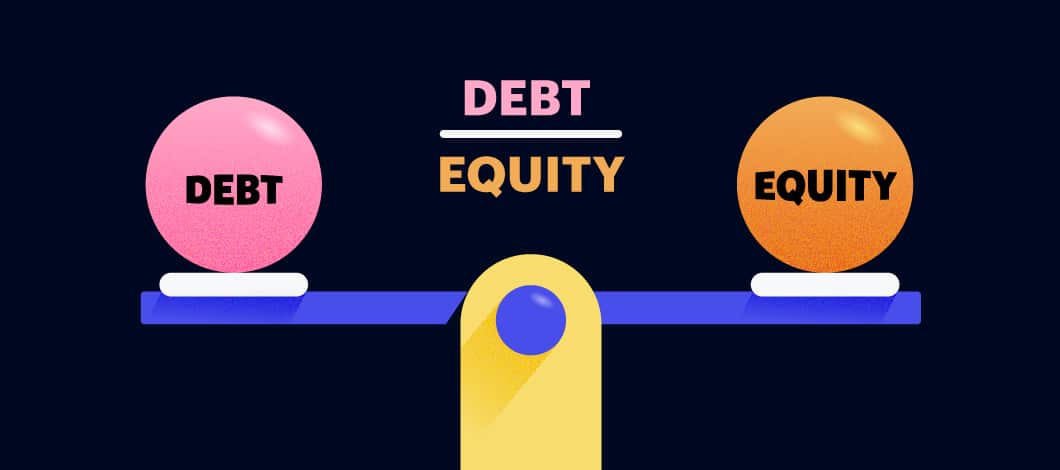A leverage ratio provides a picture of your company’s assets, debt load and ability to pay back financial obligations.
As your business grows, it needs more money to sustain itself in both equity and Debt. There are several types of leverage ratios and formulas to help investors and company owners analyze where they stand financially.
Let’s take a look at this concept with a bit more detail as well as look at some leverage ratio examples.
Financial Leverage Ratio Definition
Leverage ratios use calculations from your business’s balance sheet, income statement or cash-flow statement to estimate your company’s long-term financial health.
For a company to be profitable and provide healthy dividends to shareholders, the return on investment from loans must be higher than any interest owed on those loans.
Financial leverage ratios help lenders, investors and shareholders assess the ability of a company to meet its financial commitments and pay back debt.
-
What Is Financial Leverage?
Leverage refers to the way your company buys assets, increases cash flow and returns.
Financial leverage is a strategy where your company uses Debt to acquire assets. It also is called trading on equity. When you get financing, you have much more buying power and can purchase equipment or real estate that might be otherwise impossible for you to do.
Why Financial Leverage Ratios Matter
Leverage ratios often are used by lenders and investors to determine the amount of risk involved with a particular investment or loan.
Generally, the lower the ratio, the easier it is for your company to secure better business loan options and investments.
There are several different types of leverage ratios. For a company to be sustainable in the long term, these ratios must be balanced.
Is a High Leverage Ratio Good?
The higher your company’s leverage ratio, the higher the financial risk and the less likely you are to receive favorable loan terms from lenders. If your ratios are too high, you might be denied loans or capital investments altogether.
Leverage ratios also help your company create pro forma financial statements. These statements serve a variety of purposes, including:
- Obtaining financing
- Forecasting merger and acquisition outcomes
- Preparing budgets
- Showing future profits after a company restructure
6 Financial Leverage Ratio Formulas
Calculating a leverage ratio depends on which ratio formula you’re using.
Here are 6 types of ratios. We’ll look at the formulas for calculating them and cover leverage ratio examples for each one.
1. Debt Ratio
Your company’s debt ratio shows how much of your company’s assets (such as real estate or property) is financed. This debt leverage ratio also is referred to as the debt-to-assets ratio.
You might be wondering, “What is a good leverage ratio?” A debt ratio of 0.5 or less is optimal. If your debt ratio is greater than 1, this means your company has more liabilities than it does assets. This puts your company in a high financial risk category, and it could be challenging to acquire financing.
Formula:
Total Debt / Total Assets
Debt Ratio Example:
Total Debt: $50 million
Total Assets: $100 million
Debt Ratio: $50,000,000 / $100,000,000 = 0.5
2. Debt-to-Equity Ratio
The debt-to-equity ratio is a calculation to look at how company liabilities stack up against company equity. Unlike the debt ratio, which looks at all assets, a debt-to-equity ratio uses total equity in the formula. This debt leverage ratio helps a lender determine if a company is financing operations with mostly Debt or equity.
In many cases, a good debt-to-equity leverage ratio is 1-1.5, and a ratio above 2 is often considered risky.
These figures can vary depending on the specific industry. For example, companies that need significant funding to maintain operations, such as manufacturing companies, will have higher debt-to-equity ratios.
Formula:
Total Debt / Total Equity
Debt-to-Equity Ratio Example:
Total Liabilities: $150 million
Total Shareholders’ Equity: $100 million
Debt-to-Equity Ratio: $150,000,000 / $100,000,000 = 1.5
Discover Your Best Business Loan Options
-
Debt Ratio and Debt-to-Equity Ratio
Debt ratio and the debt-to-equity ratio are 2 of the most common leverage ratios.
They help lenders and investors determine how easy it is for a company to pay back financial obligations if interest rates increase or profits temporarily decrease.
These types of risk assessments are critical to your ability to obtain financing and investments.
3. Debt-to-Capital Ratio
Debt-to-capital ratios are often used by investors to determine risk when investing in a company. These ratios are calculated by dividing a company’s total Debt by a company’s total capital.
Total capital is all the company’s Debt plus the total amount of shareholder’s equity. If your company’s total debt-to-capital ratio is more than 1, your company’s Debt exceeds its capital.
Formula:
Total Debt / (Total Debt + Total Shareholders’ Equity)
Debt-to-Capital Ratio Example:
Total Debt: $100 million
Total Shareholders’ Equity: $210 million
Debt-to-Capital Ratio: $80,000,000 / ($80,000,000 + $210,000,000) = 27.5%
4. Debt-to-EBITDA Ratio
Earnings before interest, taxes, depreciation and amortization (EBITDA) allows companies to get a clear picture of their cash flow. It provides a view of the company’s overall financial health as well as a snapshot of short- and long-term debts divided by EBITDA. If the ratio is low, this means your company has a manageable debt load.
Acceptable debt-to-EBITDA ratios can vary by industry. For instance, a 10 could be fine for one company, but high for another. Compare your debt-to-EBITDA ratio with those of other companies in your sector.
Formula:
Total Debt / EBITDA
Debt-to-EBITDA Ratio Example:
Total Debt: $100 million
EBITDA: $10 million
Debt-to-EBITDA Ratio: $100,000,000 / $10,000,000 = 10
5. Asset-to-Equity Ratio
Your company’s asset-to-equity ratio is a measure of the total assets funded by company shareholders. Shareholders’ equity can be in the form of minority interest, common stock or preferred stock.
When asset-to-equity ratios are low, that means your company has chosen conservative financing with a minimal amount to Debt.
If the ratios are high, it often means Debt is high and lenders are unlikely to provide additional financing.
When calculating your assets-to-equity ratio, the figure you arrive at suggests the number of times greater your assets are than your equity.
Formula:
Total Assets / Total Equity
Asset-to-Equity Ratio Example:
Total Assets: $1 million
Total Equity: $500,000
Asset-to-Equity Ratio: $1,000,000 / $100,000 = 2
6. Operating Leverage Ratio
Operating leverage ratio gives insight into a company’s variable and fixed costs, or costs that remain constant regardless of sales fluctuations. Additionally, operating leverage indicates how a business uses fixed costs to turn a profit.
For instance, if your company’s operating leverage is high, that indicates you have a high percentage of fixed costs and low variable costs. In this case, an increase in revenue could have a positive effect on your bottom line.
Formula:
Quantity X (Price – Variable Cost Per Unit) / Quantity X (Price – Variable Cost Per Unit) – Fixed Operating Costs
Operating Leverage Ratio Example:
Quantity: 300,000 units
Price: $20
Variable Cost Per Unit: $0.05
Fixed Operating Costs: $750,000
Operation Leverage Ratio: 300,000 X (20 – .05) / (300,000 X (20 – .05) – 750,000 = 1.14 or 114%
This means that a 10% increase in sales should result in an 11.4% increase in operating income.

Leverage Ratios: What They Mean to Your Company
Leverage ratios are an essential part of understanding your company’s capital structure and obtaining financing. But ratios are only part of the equation. Understanding the concept of leverage is critical to knowing when to apply for a loan in the first place.











